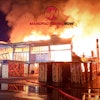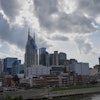Established in 1943 as part of the Manhattan Project, the Hanford Site in Hanford, Washington actually manufactured the plutonium that was used in the nuclear bomb detonated over Nagasaki, Japan.
The site has long been shuttered from a production standpoint, but 8,000 current Hanford employees are tasked with the deactivation, decommissioning, decontamination, and demolition of this massive compound where rampant nuclear waste is threatening the nearby Columbia River.
There are five large processing plants at Hanford, and Washington’s Tri-City Herald is reporting that at one of them, the Reduction-Oxidation Complex, more commonly called REDOX, contamination is spreading.
REDOX was used from 1952 to 1967 to process about 24,000 tons of irradiated uranium fuel rods to remove plutonium for the nation’s nuclear weapons program and also to recover uranium to reuse in new fuel rods. It is highly contaminated, after processing eight times more fuel per day than earlier processing plants. While the plant isn’t scheduled to be demolished until 2032, a new report is recommending that $181 million be spent on interim cleanup and maintenance of the plant, in order to reduce the threat of contamination spreading outside of the building.
According to an earlier Defense Nuclear Facilities Safety Board staff report, salt used to neutralize the contaminated processing system after it was shut down in 1967 appears to have corroded through some of the stainless steel process piping.
Also, plastic bags were taped on one processing line to catch any drips of residual plutonium nitrate in places where leaks were anticipated, and now two of those bags hold significant amounts of plutonium nitrate.
Tack on issues of animal intrusion and leaky roofing that allows in precipitation, and the risk for this waste spreading gets worse and worse.
So while it may have been that famous bomb that put an end to World War 2, the end to the aftermath at Handford is nowhere in sight.






















